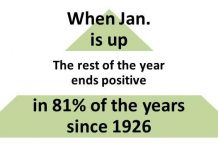Investors should be aware of the poor collective performance of U.S.-based mutual fund managers actively picking stocks and bonds. This conclusion is clear in the latest Dimensional Fund Advisors’ Mutual Fund Landscape report. It features a graphical view of the number and performance of stock and bond funds at 5, 10, and 15 year intervals. The track record is poor.
Key points include:
-
- Less than half of the stock funds survived over 15 years. The rest have merged or closed. Poor performance is often the culprit.
- Fewer than 1 in 5 stock funds outperformed their benchmarks over 15 years.
- Among stock funds with five year track records and performing in the top 25%, success in the sixth year did not follow. On average, only 23% continued to perform in the top 25%.
- High costs tend to reduce stock fund performance. Among low cost funds, 28% beat their benchmark, but only 9% of high cost funds beat their benchmarks over 15 years.
- High turnover (short holding periods) tends to lead to high trading costs. Consequently, performance falls relative to benchmarks. Among low turnover stock funds, 35% beat their benchmarks, but only 10% of high turnover funds beat theirs.
- 57% of bond funds survived over 15 years while fewer than 1 in 5 outperformed their benchmarks.
- Among bond funds with five year track records and performing in the top 25%, success in the sixth year did not follow. On average, only 27% continued to perform in the top 25%.
Investment Lessons:
-
- Fierce competition among investors in pursuit of performance, from hedge funds to sovereign wealth funds, drives securities prices to fair value. It is difficult to persistently add value by identifying mispriced securities.
- A successful track record is an unreliable guide. Even if you are able to identify a fund that has beat its benchmark, it is unlikely this superior performance will persist. Always ask whether a fund manager was skillful or lucky.
- A better way to choose funds is to focus on the fund’s investment objectives, costs (including tax efficiency for funds in taxable accounts), and the manager’s ability to capture fundamental performance drivers (or risk factors).
You can review a summary of the report below.
Links to third-party websites are provided as a convenience and do not imply an affiliation, endorsement, approval, verification or monitoring by Granite Hill Capital Management, LLC of any information contained therein. The terms, conditions and privacy policy of linked third-party sites may differ from those of this website.
This blog entry is distributed for educational purposes and should not be considered investment, financial, or tax advice. Investment decisions should be based on your personal financial situation. Statements of future expectations, estimates or projections, and other forward-looking statements are based on available information believed to be reliable, but the accuracy of such information cannot be guaranteed. These statements are based on assumptions that may involve known and unknown risks and uncertainties. Past performance is not indicative of future results and no representation is made that any stated results will be replicated. Indexes are not available for direct investment. Their performance does not reflect the expenses associated with the management of an actual portfolio.
Links to third-party websites are provided as a convenience and do not imply an affiliation, endorsement, approval, verification or monitoring by Granite Hill Capital Management, LLC of any information contained therein. The terms, conditions and privacy policy of linked third-party sites may differ from those of this website.




